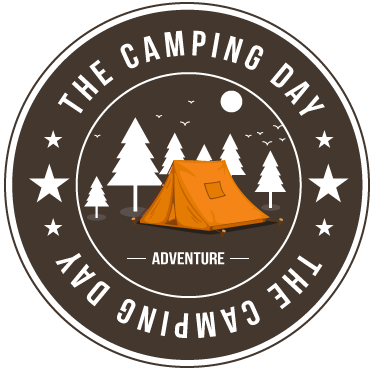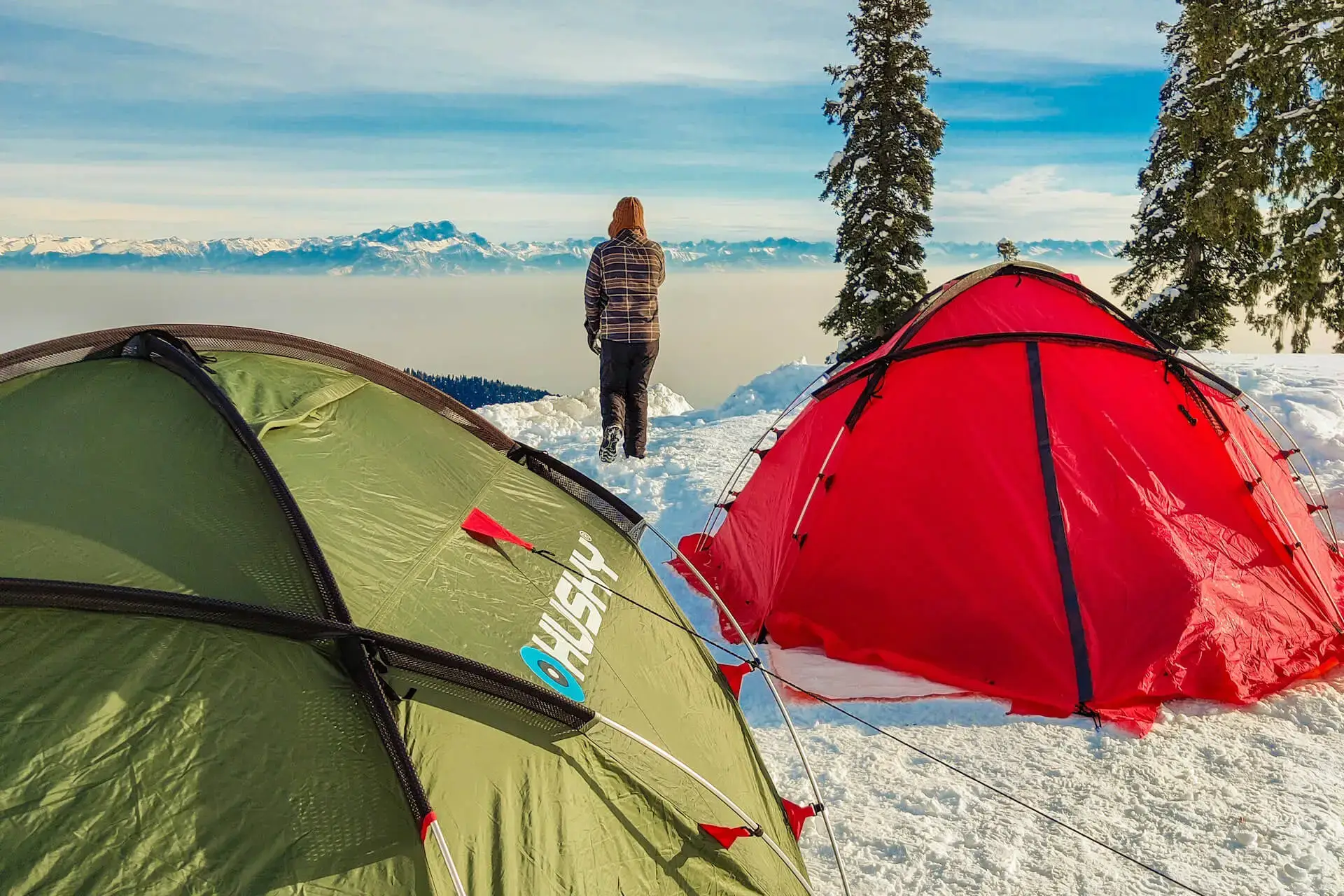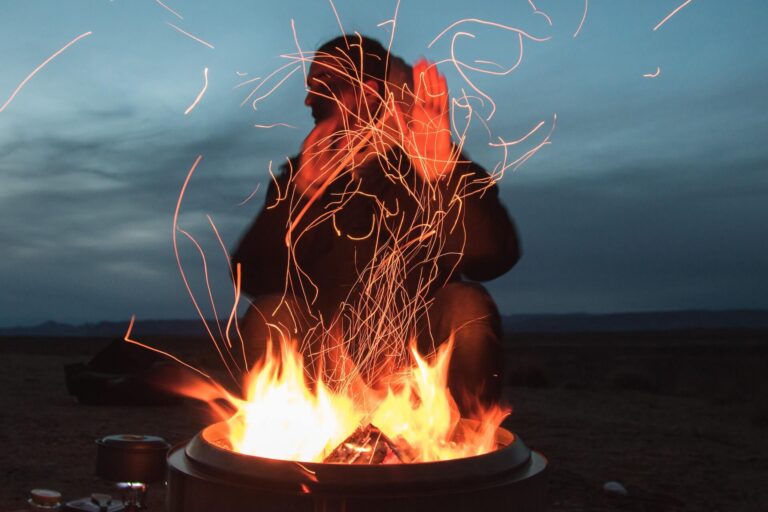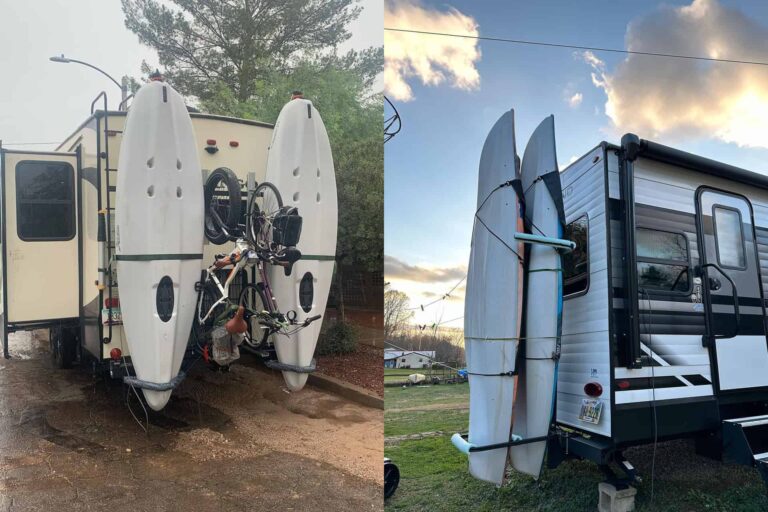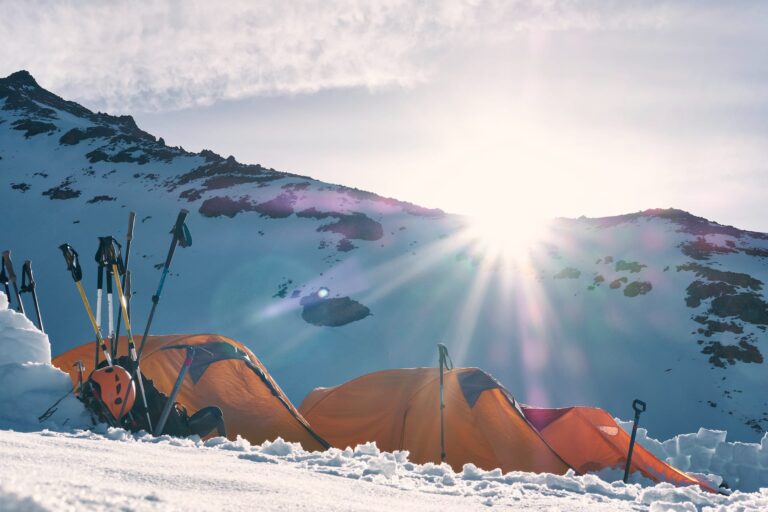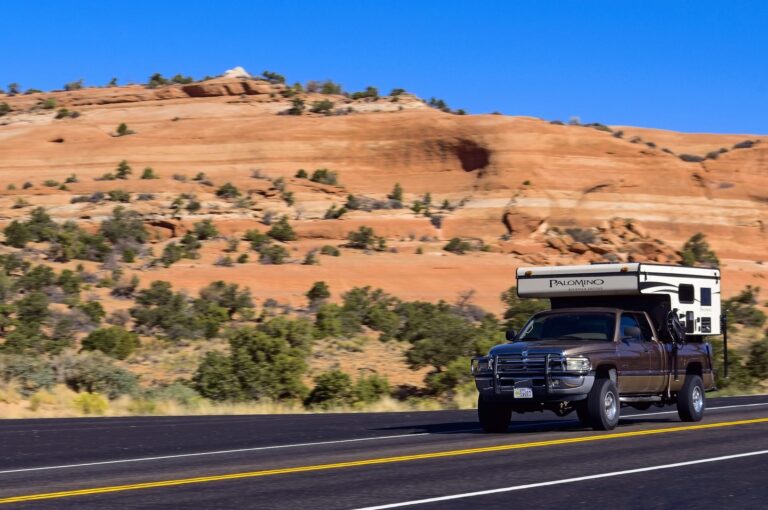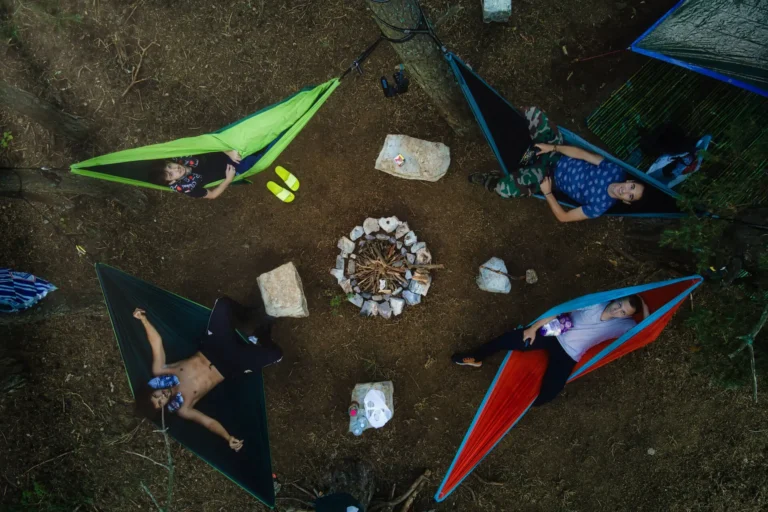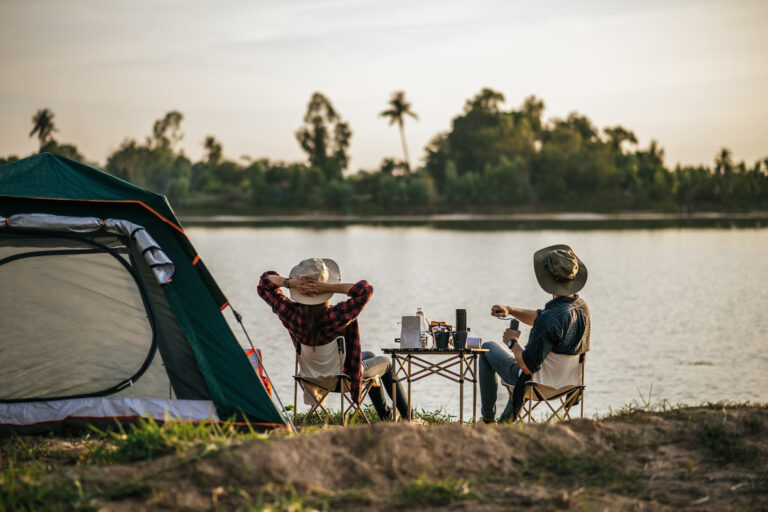The Best Guide To Winter Camping: Gear Lists, Tips And Tricks
We are in the winter season.
In some countries, winter may seem like the longest season of the year, but that doesn’t mean you have to stay indoors. And it doesn’t mean the camping season is over. Winter camping is about enjoying the pristine snow-covered landscapes, early mornings and evenings, and warm fires that only winter can offer. In addition, winter camping may not be for everyone, especially those without outdoor experience or those with certain medical conditions. It is important to assess your comfort and ability level before winter camping.

If you are considering winter camping, it is important to make sure you have the right winter camping gear and a little knowledge. In this article, I will show you how to make winter camping a warm and enjoyable experience. It will cover: camping gears, tips and locations. Overall, winter camping can actually be a lot of fun for the whole family or your partner.
Is winter camping a good idea?
Compared to summer camping, winter camping offers a different kind of outdoor experience, where everything is “softened” by nature, where unbroken snowdrifts are rounded on the natural edges of rocks, and where branches are wrapped in white and bend under the weight of trees to form a glowing tunnel in the trail.
Winter camping also offers a new kind of outdoor adventure; whether you’re snowshoeing, cross-country skiing, or just hiking in the snow, winter camping can provide an exciting and invigorating challenge.
While winter camping requires more preparation and caution than summer camping, it can be a rewarding and memorable experience for those who are well equipped and knowledgeable. For first-time winter campers, winter camping by car is more recommended.
A car allows you to carry as much gear as you want. You don’t have to worry about weight restrictions. So you can pack more thick blankets and warm clothes than you think you’ll need.
Winter car camping gives you a “base” to warm up and dry your gear. While winter tent camping is 100% feasible, you can always sleep in your car if necessary.

If you don’t have a car yet, don’t worry, follow this backpack camping guide to winter camping.
Winter camping should take the camping gears
Yes, it is important to have the right gear when winter camping. Winter camping requires specialized gear to handle the colder temperatures, harsh weather, and snow conditions.
Here’s a basic checklist for your winter camping gear:

Camping clothes
Down Jacket: A quality winter jacket is essential for staying warm and dry in cold weather. Look for a jacket with a waterproof outer layer and synthetic or down insulation, preferably with a hood.
Insulated pants: Insulated pants help keep your lower body warm and protected from the elements.
Hiking Pants: Fleece-lined running pants with a waterproof shell pant are a good option.
Wool socks: Bring an extra pair for camp.
Hiking shirt: A wicking or synthetic long sleeve will work well.
Hats: A warm hat is essential to keep your head and ears warm in cold weather.
Gloves: Good quality gloves will keep your hands warm and dry and allow you to perform tasks such as pitching your tent and starting a fire.
Thermal Underwear: Wearing thermal underwear, such as long johns, will help keep you warm by trapping a layer of warm air against your skin.
Hiking boots: Make sure the tread and rubber are optimized for icy conditions.
Pack: Whatever pack you’ve been using will work fine. Line it with a garbage bag or use a pack cover to protect it from snow and moisture.

Winter camping sleep system
Sleeping bag: A warm sleeping bag rated for cold temperatures is essential for staying warm at night. Look for a four-season sleeping bag with a good level of insulation and a comfortable lining.
Sleeping pad: A sleeping pad will help to insulate you from the cold ground and provide extra cushioning for a good night’s sleep.
Eye mask:When you have to meet the light to make sleep hard, please remember to bring an eye mask that can make you sleep more well.
Pillow: Support your neck for a better night’s sleep.

Cooking gear
Camping stove: A camping stove and fuel are essential for cooking and keeping warm. A white gas stove will burn best in winter conditions. Be sure to bring extra fuel to account for melting snow for eating.
Cooking pot: A cooking pot is essential for boiling water and cooking food. Look for a pot that is sturdy, lightweight, and easy to clean.
Camping rest
They provide you with a comfortable and convenient place to sit, eat and relax.So you need take the Roll Table, Portable Folding Chair.
Lighting
Headlamp or lantern: A headlamp or lantern is important for lighting the tent at night and finding your way around in the dark. Look for a headlamp with a strong and adjustable beam, and a lantern with a good level of brightness and battery life. A 350 lumen headlamp is a good starting point. Don’t forget it gets dark early!
Winter Navigation Tools
Map and compass: A map and compass are essential for winter wilderness navigation. Make sure you have a map of the area where you plan to camp, and that you are familiar with how to use a compass to determine your location and find your way.
GPS device: A GPS device can be a useful tool for navigation, but it should be used in conjunction with a map and compass, as it is not always reliable in areas with poor satellite coverage.
Emergency equipment
First aid kit: A first aid kit is essential for treating minor injuries and illnesses. Make sure your kit includes items such as pain relievers, bandages, and antiseptic wipes.
Fire starter: A fire starter, such as matches or a lighter, is important for starting a fire in an emergency.
Other emergency equipment: Other items you may need in an emergency include a shovel, an emergency blanket, and a whistle.
Camp Building
Dealing with cold weather and the potential for strong winds are other major contrasts to summer camping. With these things in mind, it’s important to choose a campground that is naturally protected from the elements. In particular, look for a campsite with a natural wind shelter (a grove of trees, a large rock, or a hill).
Keep an eye out for potential hazards. The most dangerous trees are those with damaged or potentially dangerous branches (known as widow makers).
Avalanches are a typical winter camping threat, especially if you’re in the mountains. Even if you are not in the wilderness, it is not advisable to camp away from a snowy slope where slides are possible.
Set up your tent in a flat, vegetation-free area. Choose a snow-free site if at all possible. If you decide to pitch your tent on snow, make a solid platform first.
Remember to take care of your tent both day and night. If it snows, clear the tent roof of any significant accumulations. Use snow pegs to further anchor your tent if wind is expected.

How to set up a camping tent
Setting up a tent in winter can be a bit more challenging than in other seasons, but with the right preparation and techniques, it can be done safely and successfully. Here are the steps to setting up a winter camping tent.
How to build a campfire in the snow
Building a campfire in the snow can be more challenging than in other seasons because rain, snow, and wind can make starting a fire more difficult than usual. But with the right preparation and technique, it can be done.

Here are the steps to building a campfire in the snow:
Build a suitable fire site – Find a cleared area in the snow away from trees, shrubs, or other flammable materials. Make sure the area is level and stable, with no snow or ice on the ground.
Gather materials to make fire – Collect dry firewood, kindling, and tinder. In winter conditions, it can be difficult to find dry wood, so consider bringing along a small supply or using a fire starter to help get the fire going.
Dig a pit – Dig a small pit in the snow with a shovel, making sure to remove snow and ice from the pit bottom. This will help to contain the fire and prevent it from spreading to other areas.
Build a fire ring – Use rocks, stones, or bricks to build a fire ring around the pit to create a barrier between the fire and the surrounding snow.
Start the fire – Place the tinder in the center of the pit, then build a small teepee of kindling around it. Light the tinder, being careful not to let the flame spread to the surrounding snow. Once the kindling is burning, add small pieces of firewood. Gradually increase the amount of wood as the fire grows.
Maintain the fire – Keep the fire within the fire ring and add more wood as needed to keep it burning. Keep an eye on the fire at all times and never leave it unattended.
Extinguishing the fire – When it’s time to put out the fire, use a shovel to smother the fire by covering it with snow. Make sure the fire is completely out before leaving the campsite.
By following these steps, you can safely and successfully build a campfire in the snow to provide warmth and light for your winter camping trip.
How to cook in winter camping
Are you feeling hungry after building your campsite?The next thing you need to do is prepare yourself to cook delicious food, actually cooking in the snow is not that difficult, you just need to follow these cooking tips below.
The basics of winter camp cooking are as follows:
Stove – Choose a stove that is designed for winter camping. Consider a stove that runs on propane or white gas, as these fuels are readily available and easy to use in cold weather.
Kitchen Shelter – A pop-up canopy or tent shelter will help protect you from the elements while cooking outdoor camping meals.
Insulate your cookware – Wrap your cookware in insulation or place it in a blanket to keep it warm and prevent food from freezing. This can also help keep your food warm for longer.
Keep your food and water warm-Store your food and water in a warm place, such as inside your tent or in a cooler, to keep them from freezing.
Start the fire early-Start your fire early in the day to give it time to warm up and be ready when it’s time to cook.
Cook slowly – In winter conditions, it can take longer to cook food, so be patient and cook slowly. This will help prevent the food from freezing and ensure that it is cooked evenly and thoroughly.

How to Stay Warm in Winter Camping
The other two most important items of winter camping gear, besides layers of warm, waterproof clothing, are a good winter tent and a warm sleeping bag.
A winter tent heater is another very useful item. To properly heat your tent, these portable heaters often use propane. The largest have safety features built in, such as automatic shut-off valves in case of accidental overturning.
Use a good sleeping bag to stay comfortable when camping in winter.
Staying active during the day can help keep you warm and prevent hypothermia. At night, use hand warmers or a hot water bottle to warm your sleeping bag, or simply wear extra clothing when sleeping.
Eating balanced meals high in carbohydrates and healthy fats can help keep you warm. Avoid alcohol, which can dehydrate you and make it harder to regulate your body temperature.
By following these tips, you can stay warm and comfortable while camping in the snow. Just be sure to keep an eye on your body temperature, and if you start to feel cold, add an extra layer of clothing or move around to help generate warmth.

What food should I bring to camp in winter
It’s important to bring food that is nutritious, easy to prepare, and provides enough energy to keep you warm. Here are some food options to consider for your winter camping trip:
High-calorie snacks: Snacks can provide quick energy and help keep you warm, such as nuts, dried fruit, energy bars, and chocolate.
Carbohydrates: Foods that provide long-lasting energy and help keep you warm include pasta, rice, bread, and oatmeal.
Fats: Foods such as cheese, olive oil, avocado, and nut butter are high in healthy fats and can provide a source of energy that burns slowly over time.
Proteins: Foods such as meat, fish, tofu, and beans can provide a long-lasting source of energy and help keep you feeling full for longer.
Warm beverages: Hot beverages such as tea, cocoa, and soup can help keep you warm and hydrated.
Freeze-dried meals: Freeze-dried meals are lightweight, easy to prepare, and a convenient way to get a hot meal.
Staple Ingredients: Consider bringing staples such as sugar, salt, and spices to add flavor to your meals.
Think about what is easy to prepare in the winter camping environment and what ingredients can be stored without freezing when planning your meals. Also consider the space and weight limitations of your gear. Prioritize foods that provide the most energy and nutrients. Don’t forget to bring enough food to last the entire trip. Consider bringing extra food in case of unexpected weather or other conditions.
How to deal with rainy weather
In some cities, it may rain and snow at the same time, so be sure to wear waterproof clothing and shoes in case it rains or snows.
You don’t need a four-season tent for rainy camping. As long as your 3-season tent is waterproof (think rainfly!), you should be fine. To keep moisture out of your tent, use a ground tarp.
When you’re not inside your tent, bring a second tarp (or other protection, such as a pop-up roof) to block the rain. This extra tarp can even be used to cover your tent at night for additional weather protection.
If your tent is set up in a flat area, you can dig a shallow channel to divert rainwater to lower areas.
Finally, even if you expect mild winter weather, I recommend bringing a tent heater. Not only will it provide more heat, but it will also help dry damp gear.
other 8 tips for winter camping
- Eat simple, high-calorie foods. When you’re camping in the cold, you’ll use a lot more energy than usual. You’ll need more food than usual, but you’ll also need to eat high-calorie meals. One-pot meals are convenient because they are easy to clean up.
- Don’t forget water – Even if you’re not feeling thirsty, it’s important to drink water regularly. When you go on a winter camping trip, staying hydrated is crucial. In fact, it can lower your body temperature. Either bring all your water with you or melt snow to make drinking water.
- Don’t Overdo It – Be careful not to get too cold. If you start to feel too cold, don’t be afraid to leave (and not warm up again). The same goes for sudden storms. Return home if you’re in over your head (if conditions allow). Later, you can go on another winter camping trip.
- Filling the Ground – Sleeping alone in a large tent isn’t the most efficient use of space. Extra floor space lets heat out and cold in. Fill the empty floor space with your bag, boots, jacket, and other items to further protect you from the cold.
- Pitch your tent – If you anticipate wind, anchor your tent with standard tent pegs or “deadman” items such as rocks and logs. Camping in the snow requires special winter tent pegs.
- Boot Storage – Bring your boots inside your tent at night to keep them warm and dry. If your boots have removable liners, tuck them inside your sleeping bag at night.
- Be able to Pee and Poop – It’s much better to use a pee bottle than to get out of your comfy sleeping bag in the middle of the night. Female urination devices (FUDs) make this easier for women. The second is a bit more difficult. You’ll probably want to leave your tent for this one.
- Necessities – Never go camping, especially in the cold, without the 10 essentials. These survival items are essential for dealing with any potential mishaps or crises.
Winter camping sites in the United States
Where can I camp in Minnesota in the winter?
Minnesota winters can be harsh, but they are beautiful and should be enjoyed to the fullest. Here is a list of parks where winter camping is available,You can view this graph directly.

Where can I camp in Idaho in the winter?
Here is a list of parks where winter camping is available,You can view this list directly.
- 1. Devil’s Lake Quartzite Campground
- 2. Woodside Cottages, Bayfield, Apostle Islands National Lakeshore
- 3. Wisconsin Ridge Campground, Wyalusing State Park
- 4. Copper Range & Bois Brule Campgrounds, Brule River State Forest
- 5. Mauthe Lake and Ottawa Lake Campgrounds, Kettle Moraine State Forest
- 6. Daisy Field Campground, Potawatomi State Park
- 7. Blue Mound Family Campground, Blue Mound State Park
- 8. Sandstone Ridge Campground, Mirror Lake State Park, Wisconsin Dells
- 9. North Campground, Copper Falls State Park
- 10. Northern Highland – American Legion State Forest Campgrounds
- 11. Family Campground, Kohler-Andrae State Park
- 12. Family Campground, High Cliff State Park
- 13. Family Campground, Big Bay State Park Campground, Madeline Island
- 14. Pigeon Creek Campground, Black River State Forest
- 15. Family Campground, Point Beach State Forest
Where can I camp in winter in Ohio?
Here is a list of parks where winter camping is available,You can view this graph directly.

Remember to stay safe when winter camping
In any camping trip, safety is the first important thing.Snow and other winter weather conditions might provide more dangers and difficulties because of the cooler temperatures. Here are some pointers to keep you safe while camping in the winter:
In advance: Before you go winter camping, research the area you’ll be in and make sure you have the appropriate supplies for the weather. Have a strategy for your trip and make sure someone knows about it in case of an emergency.
Dress in layers: Dressing in layers will help you adapt to temperature changes and keep you warm. To protect your extremities from the cold, wear a waterproof outer layer, hat, gloves and insulated boots.
Keep hydrated: It’s important to stay hydrated, even in cold temperatures. Drinking water is important, and alcohol should be avoided as it can dehydrate you.
Food Storage – To reduce the risk of contact with wildlife, follow all local food storage recommendations. Be especially aware of bears. Place all food (and scented items) in a bear-proof container, bear-proof bag, or hard-sided vehicle. While it may be tempting to cook in your tent in the winter, remember that the smell lingers and can attract wildlife.
Carbon Monoxide – Tent heaters, stoves, and other devices that emit carbon monoxide are often necessary in the winter. Never use any of these appliances in a small, unventilated area, such as a tent (door fully open). However, the Centers for Disease Control advise against using any fuel-burning appliance inside a tent (or similar enclosed space).
Hazard trees – Learn to recognize hazard trees and never pitch a tent under one. Hazard trees can be harmful at any time of year.
Avalanche Safety – Acquire the skills necessary to recognize avalanche hazards by evaluating topography, climate, snowpack, and human variables to identify potential risks before they occur. Developing this skill on your own is challenging. To learn from a professional, we recommend enrolling in an avalanche safety course. You’ll learn avalanche safety procedures, such as how to free a buried subject.

Short FAQ About Winter Camping
How cold can you camp without heat?
The coldest temperature you can camp without a heater depends on several factors, including your equipment, clothing, and physical condition. However, as a general rule of thumb, it is recommended that you do not camp in temperatures below 0°C (32°F) without the proper equipment and gear to keep you warm.
What do you do in winter camps?
Winter camping can offer a variety of activities, such as skiing or snowboarding: If you’re camping near a ski resort or backcountry area, you can hit the slopes for some skiing or snowboarding.
Snowshoeing: Snowshoeing is a great way to explore the winter landscape and get some exercise.
Ice Fishing: If you’re camping near a frozen lake or river, you can try your hand at ice fishing.
Snowmobiling: Snowmobiling is a fun way to cover ground quickly and explore the winter landscape.
Winter Hiking: If you’re up for a challenge, try a winter hike and take in the scenic beauty of the winter wilderness.
Sledding or Tubing: For a fun and low-impact activity, bring a sled or inner tube and enjoy some sledding or tubing.
Conclusion
Winter camping is just camping. Winter camping requires special gear, skills, and knowledge, so make sure you have studied and are properly prepared. It can look scary, but it’s really not that hard. So get out there and try winter camping for yourself instead of storing your stuff and staying indoors all season!
However, we’d want to hear from you before you go. Tell us in the comments where you like to go winter camping!
